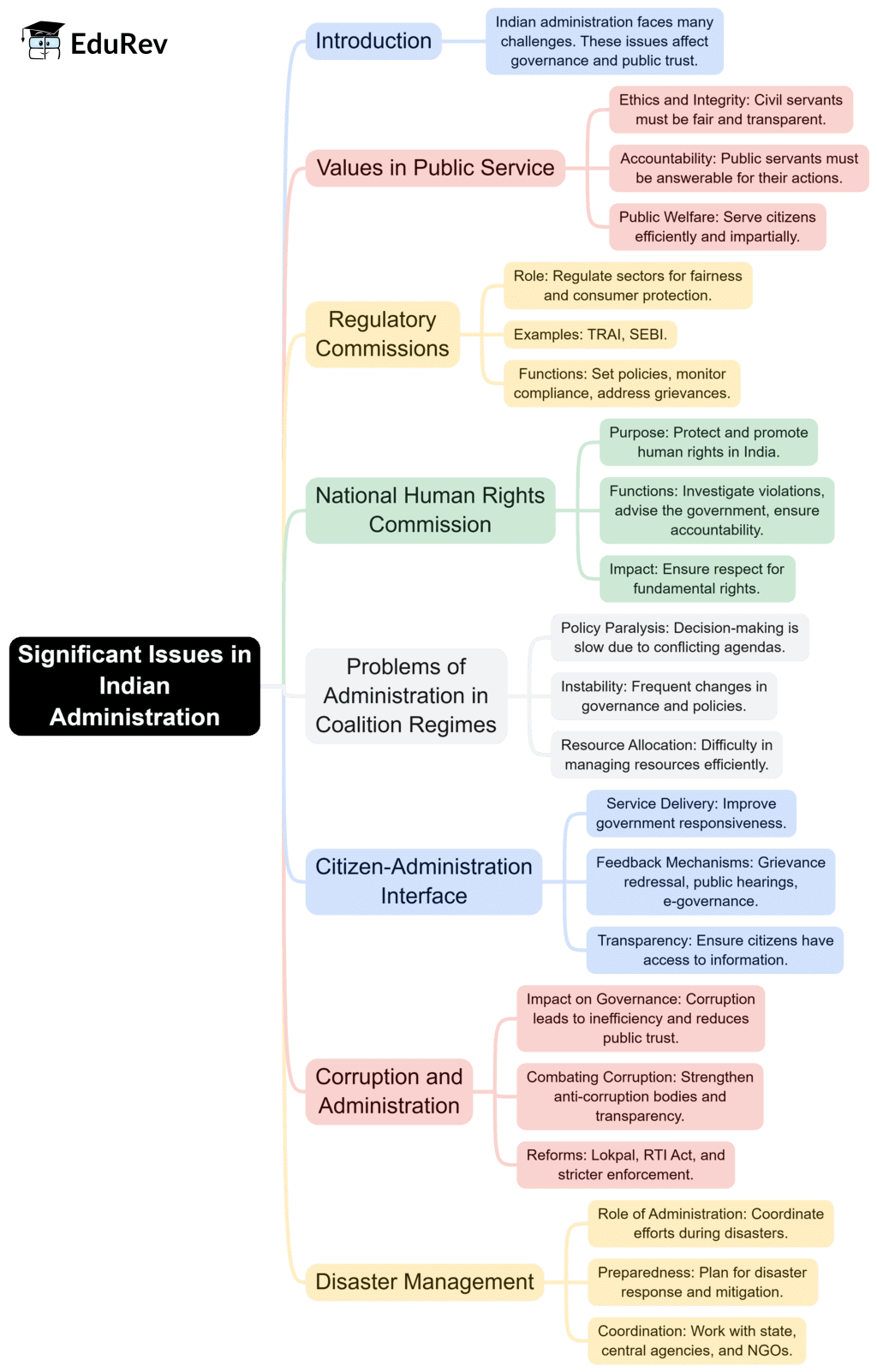UPSC Exam > UPSC Notes > Public Administration Optional for UPSC (Notes) > Mind Map: Significant issues in Indian Administration
Mind Map: Significant issues in Indian Administration | Public Administration Optional for UPSC (Notes) PDF Download

The document Mind Map: Significant issues in Indian Administration | Public Administration Optional for UPSC (Notes) is a part of the UPSC Course Public Administration Optional for UPSC (Notes).
All you need of UPSC at this link: UPSC
|
58 videos|242 docs
|
FAQs on Mind Map: Significant issues in Indian Administration - Public Administration Optional for UPSC (Notes)
| 1. What are the major challenges faced by Indian administration today? |  |
Ans. The major challenges faced by Indian administration include corruption, bureaucratic red tape, inefficiency in service delivery, lack of accountability, and inadequate infrastructure. Additionally, issues like political interference, the complexity of laws, and the need for greater transparency also pose significant obstacles to effective governance.
| 2. How does the Indian administrative system address issues of corruption? |  |
Ans. The Indian administrative system addresses corruption through various mechanisms such as the Prevention of Corruption Act, establishment of the Central Vigilance Commission (CVC), and the Right to Information Act (RTI). These frameworks aim to promote transparency, accountability, and provide a means for citizens to report corruption. Additionally, awareness programs and training for officials are implemented to instill ethical practices.
| 3. What role does the Indian Administrative Service (IAS) play in governance? |  |
Ans. The Indian Administrative Service (IAS) plays a crucial role in governance as the backbone of the administrative machinery. IAS officers are responsible for implementing government policies, maintaining law and order, and ensuring delivery of services to the public. They act as a link between the government and citizens, and their decisions significantly impact the administration at various levels.
| 4. What reforms have been proposed to improve the efficiency of Indian administration? |  |
Ans. Proposed reforms to improve the efficiency of Indian administration include simplifying bureaucratic processes, enhancing the use of technology for service delivery, decentralization of power to local bodies, and promoting citizen engagement in governance. Further, capacity building and continuous training for officials are emphasized to adapt to changing governance needs.
| 5. How does the structure of Indian administration affect policy implementation? |  |
Ans. The structure of Indian administration, characterized by a centralized bureaucracy, can lead to delays in policy implementation due to layers of approval and red tape. However, it also allows for uniformity in policy application across states. The challenge lies in balancing central authority with local autonomy to ensure timely and effective execution of policies tailored to regional needs.
Related Searches





















